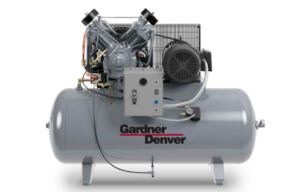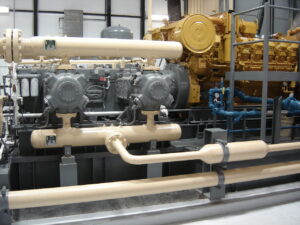The electric vehicle (EV) revolution has begun, and it couldn’t have come at a better time. As prices at the pump begin to rise with no end in sight, it seems like everywhere we turn, every auto manufacturer or transportation company is touting their mission to be off fossil fuels by going green with EVs. To power these EVs, another form of fuel, compressed hydrogen, is starting to pick up “steam” and could be the answer to the world’s fuel challenges.
Hydrogen has been at the forefront of energy conservation discussions this year. While our high school chemistry classes taught us about hydrogen, the concept of using hydrogen as a fuel source created by renewable energy instead of fossil fuels requires more than a Bunsen Burner or a pair of goggles to understand.
HYDROGEN HAS POTENTIAL
The effects of the emissions from fossil fuels have been driving conservationists and environmentalists to find alternative fuel sources. Since hydrogen’s only by-product when consumed in a fuel cell is water, it has the potential of being an ideal option to provide clean power for manufacturing, transportation, and more. Clean emissions are not the only reason the hype for hydrogen is growing.
Producing hydrogen is much easier compared to traditional fossil fuels. And because it is so abundant due to a variety of domestic resources that help in creating hydrogen, such as natural gas, nuclear power, biomass, and renewable power like solar and wind, its supply is limitless. Because of this, hydrogen has become an attractive fuel option. Hydrogen can be used with fuel cells to power anything that uses electricity. Unlike batteries that we are used to, hydrogen fuel cells don’t need to be recharged nor will they run down if they have hydrogen fuel. Plus, they can be stored in large amounts for a long period of time. And when it comes to energy output, hydrogen contains almost three times as much energy as fossil fuels, so you don’t need a lot of it to do the same amount of work.
So, what’s the catch?
STORING COMPRESSED HYDROGEN
Usually if it sounds too good to be true, it probably is. The same is true with finding the right ways to have hydrogen power our world. Hydrogen is much less dense than gasoline, which is where compressed hydrogen is needed. To transport hydrogen, it needs to be cooled to -253˚C to liquefy it, or it needs to be compressed to 700 times atmospheric pressure so it can be delivered as a compressed gas. This is where the challenge comes into play.
One of the largest challenges for the EV revolution has been how to store enough hydrogen in the vehicle to meet the demands and expectations of drivers today. Conventional driving range for a full fuel tank is 300 miles. This would require approximately five to 13 kilograms of compressed hydrogen gas, and while that might not sound like a ton (pun intended), hydrogen takes up a much larger volume, and is under significant pressure compared to good ol’ gasoline. This means EVs would have to figure out a new way of storing the hydrogen safely and efficiently.
Compressed hydrogen has a great deal of potential in our quest for cleaner fuel alternatives. Not only can we use it in every sector, but it is useful in tackling the hardest fuel using problem areas – industry and transportation. Using compressed hydrogen may be a challenge to the EV revolution, but it may just pose the answer to finding relief from the pump and fossil fuels.




